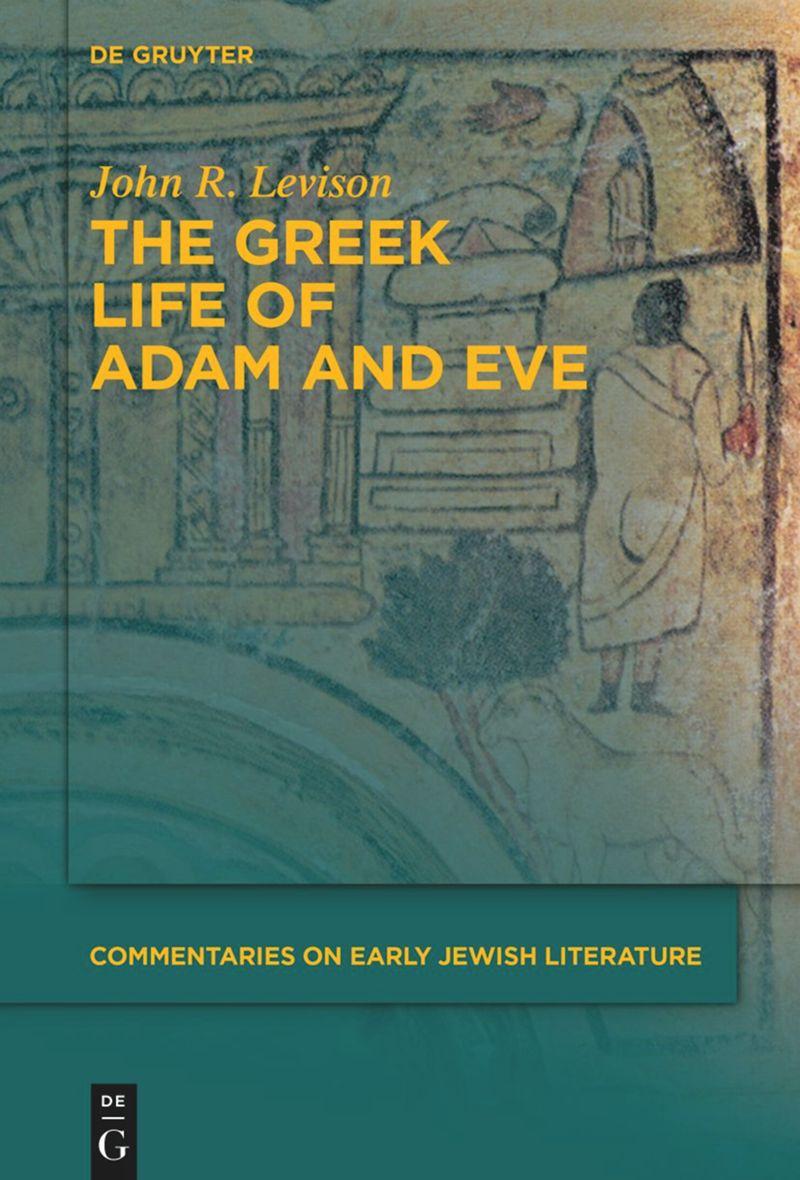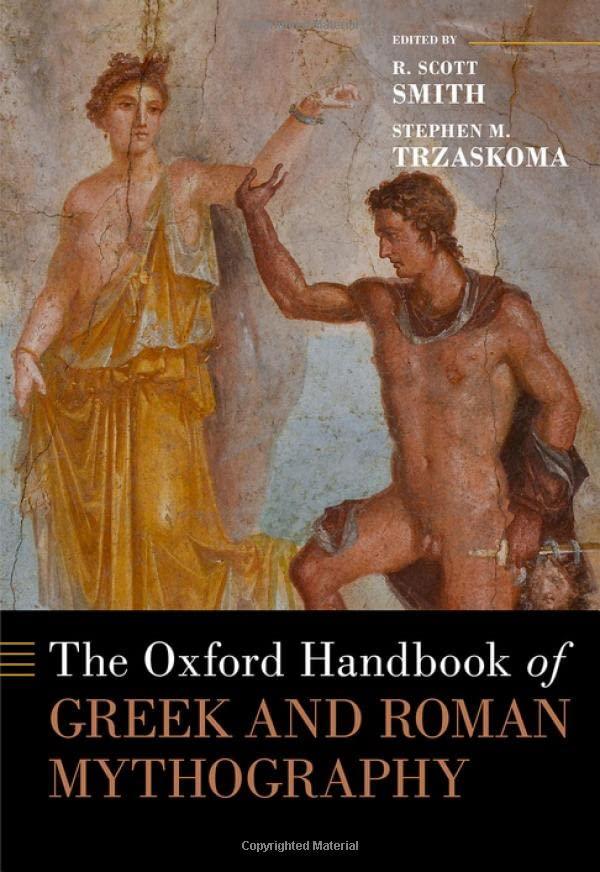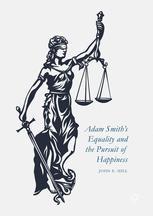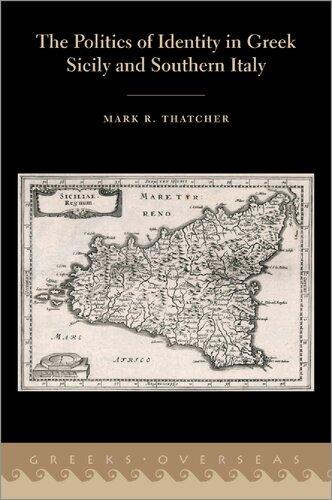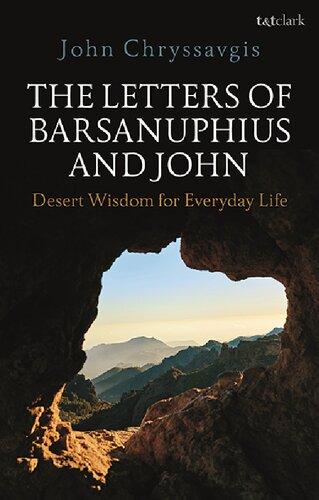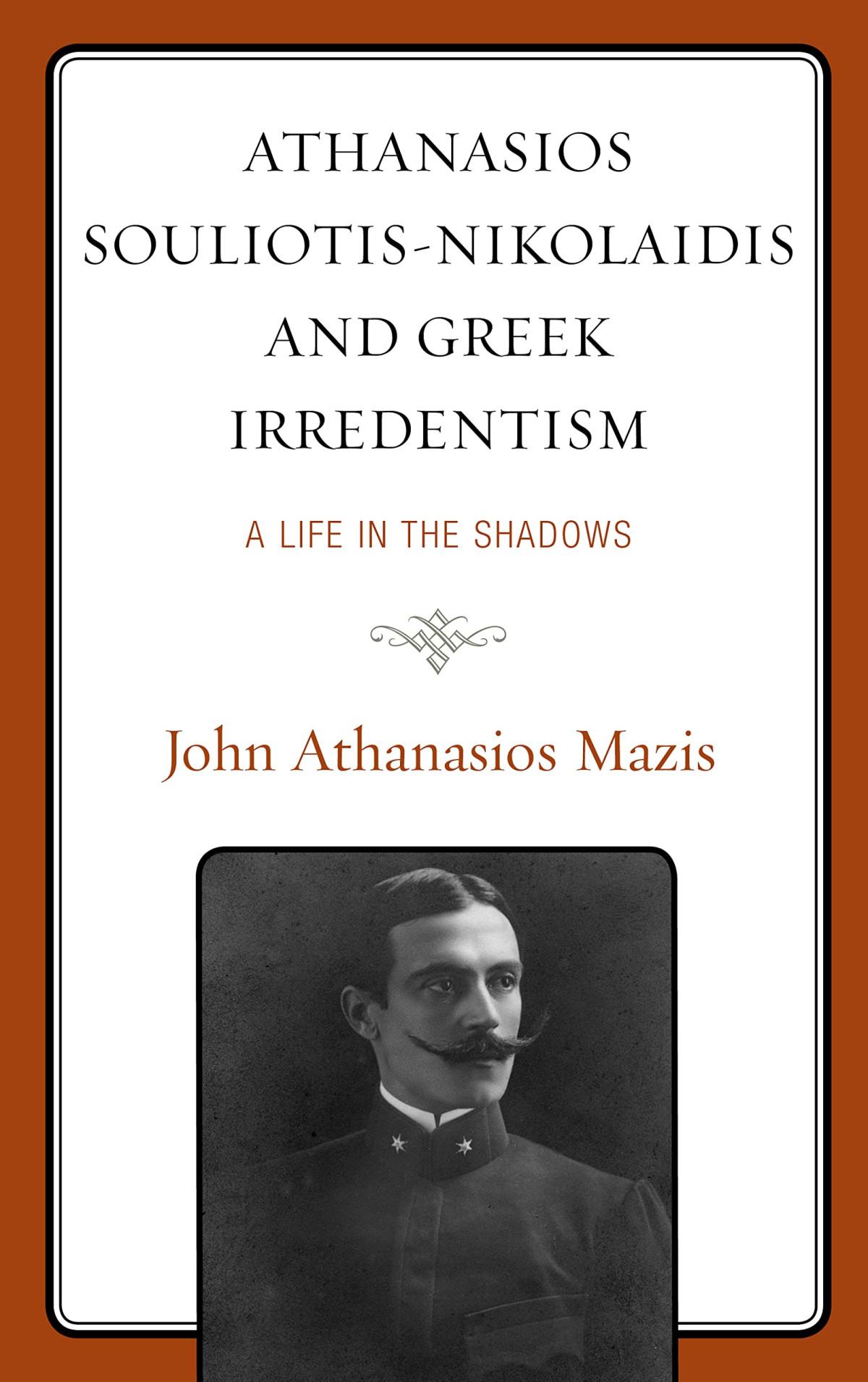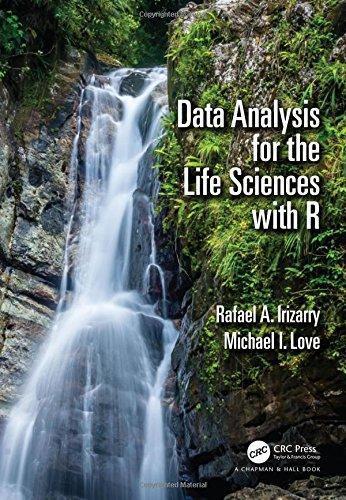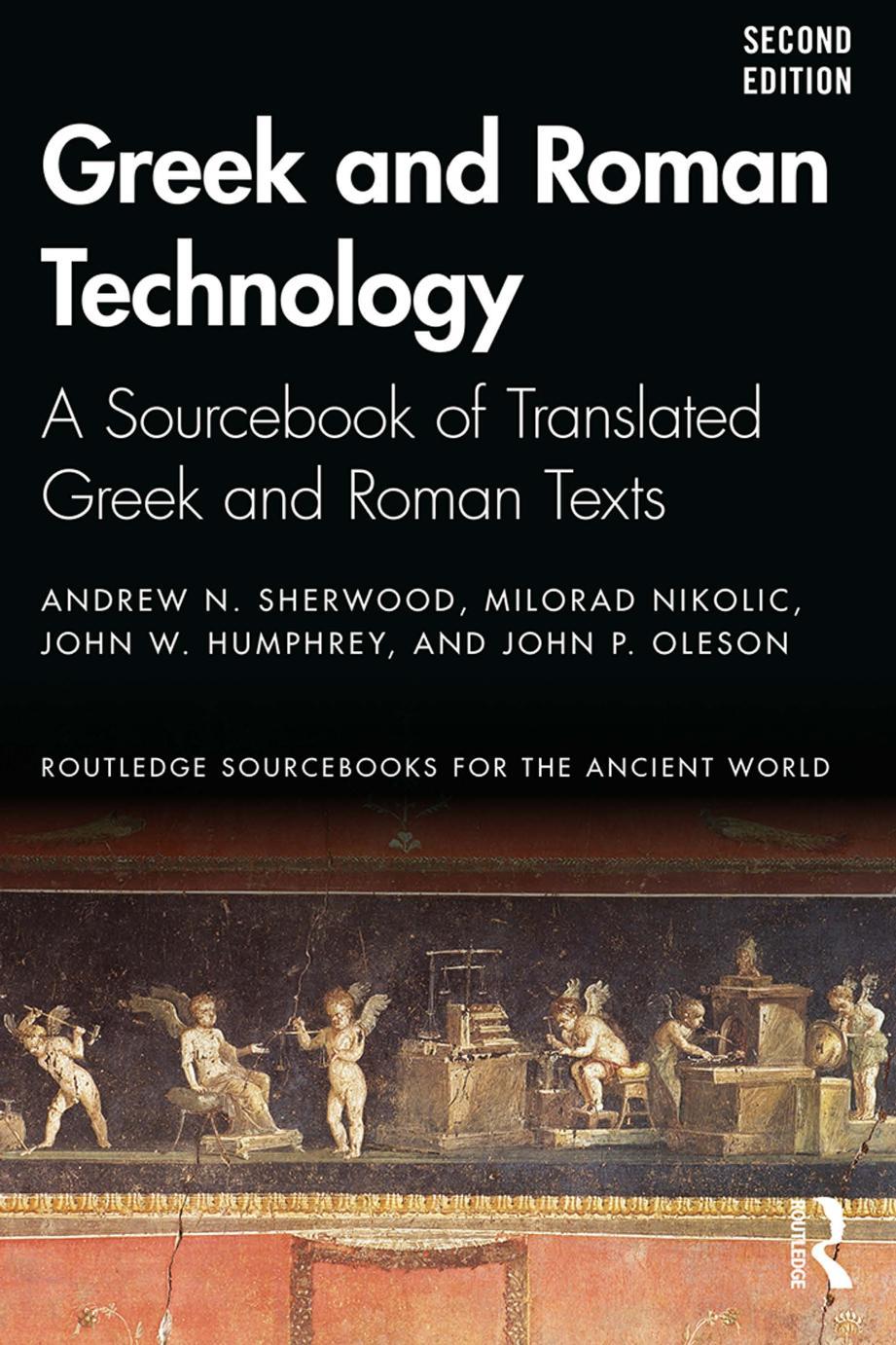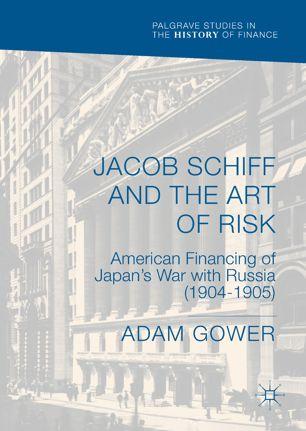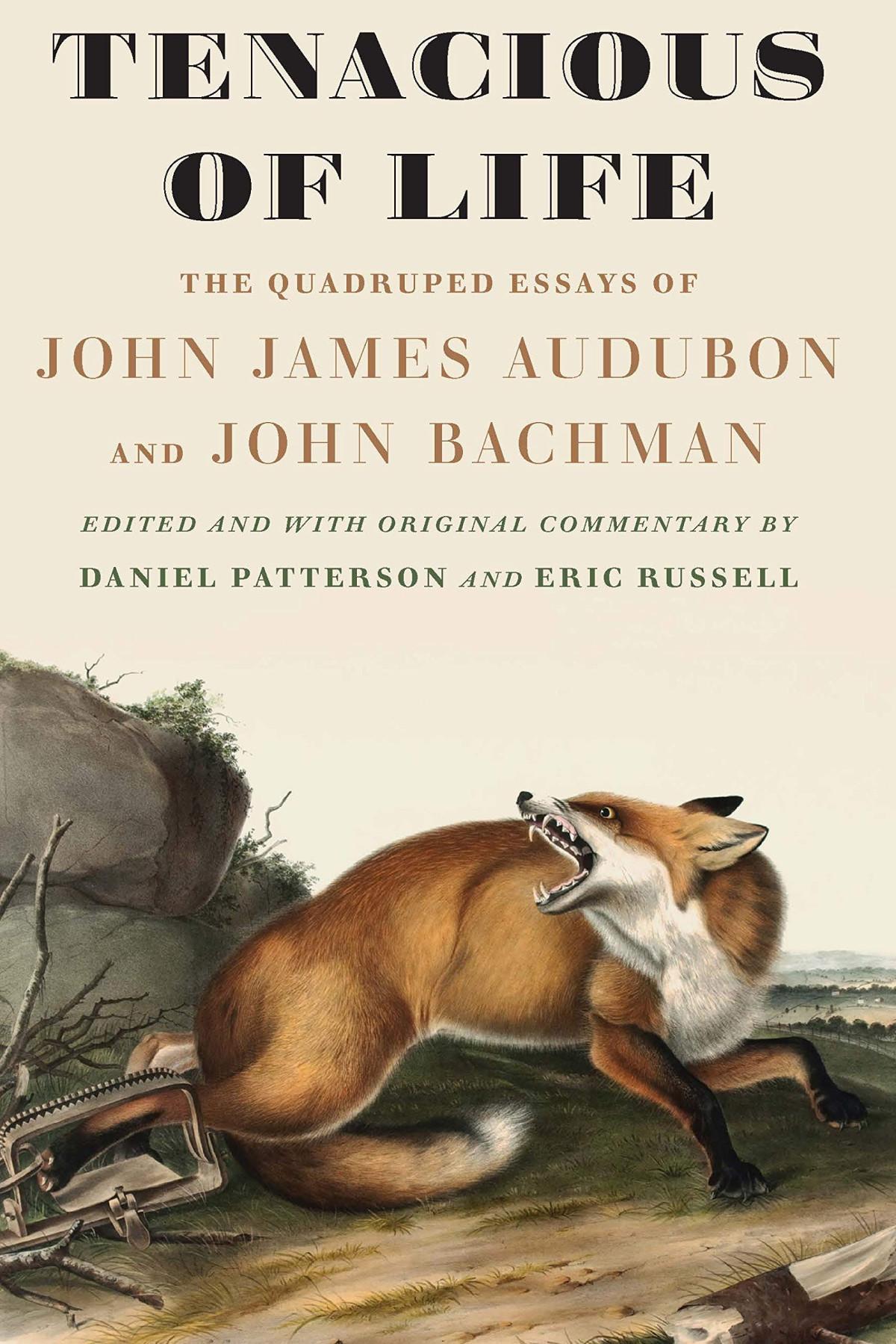The Greek Life of Adam and Eve
De Gruyter
ISBN 978-3-11-075588-6
e-ISBN (PDF) 978-3-11-075644-9
e-ISBN (EPUB) 978-3-11-075652-4
ISSN 1861-6003
Library of Congress Control Number: 2021953273
Bibliographic information published by the Deutsche Nationalbibliothek The Deutsche Nationalbibliothek lists this publication in the Deutsche Nationalbibliografie; detailed bibliographic data are available on the Internet at http://dnb.dnb.de.
© 2023 Walter de Gruyter GmbH, Berlin/Boston
Typesetting: Dörlemann Satz GmbH & Co. KG, Lemförde Printing and binding: CPI books GmbH, Leck
www.degruyter.com
To
Priscilla my lifelong love in prayer and in service
INTRODUCTION
Chapter 1: The Greek Life of Adam and Eve as Literature ........ 3
Chapter 2: Manuscripts, Greek Text Forms, and Versions ........
Chapter 3: Origin of the Greek Life of Adam and Eve
GLAE 26
GLAE 27
GLAE 28
GLAE 29
GLAE 30
GLAE 31
GLAE 32
GLAE 33
GLAE 34
GLAE 35
GLAE 36
GLAE 37
GLAE 38
GLAE 39
GLAE 40
GLAE 41
GLAE 42
GLAE 43
Translations of Ancient Sources Used in This Commentary
Bibliography
Index of References
Index of Names and Subjects
685
703
722
739
763
768
787
805
840
849
865
881
909
934
952
999
1006
1049
1069
1072
1089
1208
Acknowledgements
When I hold this commentary in my hands, Priscilla and I will have celebrated our fortieth wedding anniversary. I am cowed by the realization that I’ve spent half of my married life with the obligation—for many years it proved more obligation than opportunity—to write this commentary. During that time, I’ve garnered so many debts, and amassed so many acknowledgments, that I had better get down to it.
My first yearlong stretch of research devoted to this commentary began in 2000, in the bucolic confines of the National Humanities Center, tucked into the loblolly pines a few miles from Duke University, where I had been teaching at the time. In a lovely office with a view to the forest and in the company of intellectually alert colleagues, including my delightful nextdoor neighbor, Kate Lowe, my walking-partner, Dennis Romano, and an affable senior colleague, Tom Laqueur, I set out to write—not quite this commentary, but a few articles that would feed it, such as one on funerals in the writings of Josephus. That year, I also published Texts in Transition: The Greek Life of Adam and Eve, a sort of prolegomenon to the commentary.
I continued to write articles and give papers on the Life of Adam and Eve, but I proved prodigal: much of my passion for the next two decades lay with ancient pneumatology. When I finally directed more of my attention to the Greek Life, it was with extensive support, not least from Dean Craig Hill, who authorized my research leave in 2018–19, and the generous funding of the W. J. A. Power Chair of Old Testament Interpretation and Biblical Hebrew at Perkins School of Theology, Southern Methodist University, which I have been privileged to hold since 2015.
The Power Chair has funded a steady flow of stellar doctoral students, each of whom has worked efficiently, carefully, and reliably: William Glass, Andrew Klumpp, Lane Davis, and Kelsey Spinnato. Each has done the unimaginably delicate, detailed, and difficult work of indexing, proofing, organizing, collating, searching ancient indexes and databases, and, in the case of Kelsey, wrestling an edited book, The Pursuit of Life: The Promise and Challenge of Palliative Care, into publishable form. Kelsey worked tirelessly to the end—an act of sheer collegiality and friendship—during our last afternoon together, before sending the final proofs and indexes to
https://doi.org/10.1515/9783110756449-201
Acknowledgements
De Gruyter. I have said dozens of times that the greatest asset of the Power Chair is the opportunity it has given me to work with a succession of stunning SMU doctoral students.
The Power Chair has also afforded me the opportunity to view original manuscripts of the Greek Life of Adam and Eve. In 2016, I travelled to Greece. In Athens, I visited the Ethnikē Bibliothēkē tēs Hellados. On the island of Andros, I visited Monē tēs Hagias. Our visit to Andros demands more than a mere mention; it was quite the adventure. It began right here in Dallas, on the Southern Methodist University campus, with our colleague in the Lyle School of Engineering, Panagiotis (Panos) Papamichalis. Panos used family connections in Greece to connect us with the remote and nearly inaccessible Monē tēs Hagias; I sat in Panos’ office as he negotiated, I think, in Greek. With the connection ably made, we travelled to Athens and took the ferry from the mainland to Andros off-season in high winds—so high that the return ferry trip had to be postponed. We rented a small Fiat in the quiet but blustery port. The next morning, we jolted and puttered up the mountainside to a monastery, where we were warmly welcomed. Inside the doorway stood a young woman, Vicky Vasilikipetsas, donning a University of British Columbia sweatshirt. Vicky translated for us the entire time. The monastery had only two sisters left, who embodied the quintessence of hospitality. We visited relics, the chapel, and then we were invited into their homey dining room for a considerable lunch. When it was time to look at the manuscript, octogenarian Sister Parthenia energetically fetched it from a back room in a Ziploc bag. We sat elbow to elbow at the dining room table, as Sister Parthenia turned every page, reading through the Greek Life of Adam and Eve line by line. What a treasure—yes, the manuscript, but even more the chance to sit with lovely people in a warm dining room at the crest of a mountain in a remote monastery on a Greek island. I tell this story because it is one thing to acknowledge the generous funding that made it possible and quite another to describe the adventure we had thanks to that funding.
Early the next summer, in 2017, thanks again to the Power Chair, I viewed manuscripts in Italy in magnificent libraries: in Venice, the Biblioteca Nazionale Marciana; in Milan, the Biblioteca Ambrosiana; in the Vatican City, the Biblioteca Apostolica Vaticana; and in Brescia, the Biblioteca Queriniana, which was actually a gorgeous public library accessible to anyone who cared to visit. I left that library in possession of a beautiful book of library holdings; this book, a gift from the warm and generous librarians, still graces our home.
The summer of 2018 found Priscilla and me in Oxford. Thanks to a Sam Taylor Award, I was able to do essential research in the spectacular
Acknowledgements
holdings of the Oxford Centre for Hebrew and Jewish Studies; my research there began with a cup of tea and a dollop of great advice from Martin Goodman. Priscilla was doing her own research on women in the Wesleyan tradition. Thanks to her friendship—and now mine—with Bill Gibson, we enjoyed the privilege of being visiting fellows at Oxford Brookes University. It was, by all counts, a grand summer in Oxford.
Later that year, in December of 2018, while I was on research leave, thanks to the support of Perkins School of Theology, Priscilla and I left Dallas to spend five months in Munich, with the backing of a generous Wiederaufnahme from the Alexander von Humboldt Foundation. While I wrote a few articles in Munich, the lion’s share of my energy I devoted to the textual work in this commentary. It was brutal labor, but I at least had the pleasure of doing this work in an apartment situated a stone’s throw from the English Garden, where I strolled in the very early morning and late afternoon for hours on end, often hand in hand with Priscilla. My host in Munich was longtime friend, Loren Stuckenbruck, who has been a stalwart champion of this project for years. In Munich, we enjoyed pizza and coffee and cakes together, but Loren’s radiance and kindness I knew for many years before my stay in Munich. Loren, a dear friend, never pushed me to get done, though he might have; he seemed always to encourage rather than cajole, to prompt rather than push. Loren is gifted in that way.
During this time, I received another Sam Taylor fellowship—and then another—so that I could travel to Leiden in order to view Johannes Tromp’s photographs of Greek manuscripts. Covid-19 made those trips impossible, so Johannes checked my textual work himself. He applied his unparalleled skills to the task and agreed reluctantly to accept the Sam Taylor funding for his labor. I should add that I have leaned daily on Johannes’ critical edition; it is with the permission of E. J. Brill Publishers, thanks to the financial support of De Gruyter Publishers, that Johannes’ critical edition is the source of the Greek text at the beginning of each commentary chapter. Johannes deserves more than a mention as the scholar who ensured the accuracy of the Greek in this commentary. Johannes has been a friend for decades; I still remember the wonderful symposium he and Marinus de Jonge hosted in Leiden during the mid-nineties. What I want to acknowledge, because it speaks to the heart of this friend, is that he volunteered to read large swaths of the introduction to this commentary and engaged it thoroughly. I was astounded by how closely Johannes studied these chapters. He made minute corrections in the manuscript descriptions. He caught occasional inaccuracies. And, most of all, he disagreed with me with all of force of collegiality and friendship. In particular, though not exclusively,
Acknowledgements
Johannes pushed me hard to acknowledge how little we really have to go on when it comes to dating and provenance. I pushed back hard, too. What you will read is the product of dialogue and discussion. I have deep affection for Johannes and hope he sees in this commentary a tribute to his superb scholarship and our friendship—both.
My friends in the Bridwell Library at Southern Methodist University, directed first by Roberta Schaafsma and then by Anthony Elia, have been exemplary colleagues, as well. Jane Elder, Leslie Fuller, Sally Hoover, and David Schmersal never hesitated to work side-by-side on technology, tracking down arcane resources at other libraries, scanning articles, and fetching books when the Bridwell was closed for renovation. David Schmersal, in particular, devoted unflagging labor—and astonishing skill—to the mutual research that would materialize in this commentary. I am not sure how I would have written this commentary without the resources of the Bridwell, especially during the pandemic, when so much of the world closed down.
I am grateful, too, to Don Gillis, for introducing me to Accordance Bible Software. Accordance provided the equivalent of shelves of reference tools in my laptop. I shudder to imagine writing this commentary without the use of Accordance. I would be remiss as well not to mention Jan Tuckerman, our travel agent and the consummate professional. It took countless emails to and from Jan to plan unusual trips to Italy, Greece, and Germany, each of which was all the better for having worked with Jan. In Munich, at the final stages of revision, Mirjam Seidler worked through the abbreviations to ensure consistency and to provide a list of abbreviations; Loren Stuckenbruck came alongside her to do a final tidying of references to the Dead Sea Scrolls. Masahiro Kubota spent the entire summer doing a masterful and meticulous job of compiling detailed indexes.
I owe, too, an appreciable debt to the good people in Berlin who work at De Gruyter. I have known Albrecht Doehnert, editorial director of theology and religion, for years; we have a standing lunch date at the annual Society of Biblical Literature meeting. Albrecht is stalwart, quick with a kind word. but alert, too, to the vicissitudes of the publishing world. I am grateful as well to the ever-patient Sabina Dabrowski, along with her colleagues, Alice Meroz and Andreas Brandmair, who shepherded production of this volume.
Finally, over the years I have had conversations with friends and colleagues, who tendered beneficial advice about this research. These include, among others, Dale Allison, Gary Anderson, Daphna Arbel, David Aune, Markus Bockmuehl, James Charlesworth, Randy Chesnutt, John J. Collins, Rob Cousland, Marinus de Jonge, Owen Ewald, Daniel Falk, Louis Feldman, Steven Fine, Sue Garrett, Jerry Hawthorne, Robert Hayward, Mat-
thias Henze, Ron Herms, Karina Martin Hogan, Brooke Holmes, Larry Hurtado, David Laskin, Byron McCane, Martin Meiser, Carey Newman, Judy Newman, George Nickelsburg, Andrei Orlov, Michael Stone, Marianne Meye Thompson, Jim VanderKam, Rob Wall, Archie Wright, Ben Wright, and Tom Wright.
The original contract for this commentary is nearly as old as our children, Chloe and Jeremy. For most of the years I’ve spent writing, they were oblivious, as they should have been, to this research, since they were much more concerned to look into the bleachers to see Priscilla and me at softball and baseball games. But last year, as I buckled down, they became my cheerleaders in the bleachers. During the pandemic, while she worked remotely, Chloe would often come to our snug townhome in Lower Greenville and work about eight feet away from me—she at the kitchen counter, I at the dinner table. Toward the end of the day, she would ask, “How many lines, Dad?” How many lines of Greek had I gotten through that day? Jeremy would call or pop over and ask the same question. It became something of a daily routine—and sheer pleasure for me to know that they may not have cared much about this ancient text, but they did care about their old man.
There is a moment in the Greek Life of Adam and Eve when Adam opens the past to his children. “When God made us,” he recalls, “both me and your mother, through whom I am also dying.” This begins in such a promising way: ἐμέ τε
. In a narrative whose Greek is often inelegant, the intimacy evoked by τε καί is striking. The couple was together—both and. Then the tone darkens, the tenor dims, as Adam drives a wedge between himself and Eve: δι’ ἧς καὶ ἀποθνήσκω. I resist this notion, that Adam dies through Eve. I resist it for a variety of reasons, of course, but particularly because it is unimaginable to me, a man married to a woman who has been the source of life for forty years. For a generation, Priscilla has generated life. So I want to begin our story, “When God made us, both me and your mother, through whom I am also living.”
And how we have lived! Not just in distant Greek monasteries or apartments under the eaves in Munich or quirky hotels in Rome. Not just in travel, but at home, too. In Durham and Seattle and Dallas. Not just during times of adventure, but during months of quarantine, when the dinner table was my desk and the small room upstairs Priscilla’s office. Those places, these moments, too, I cherish—because I cherish her.
If Adam’s reminiscence begins with a sense of inseparability, Eve’s final prayer contains the same sense and sentiment, though, as a reader of the Greek Life knows, Eve expresses this with more verve than her husband. “As I was with him in paradise,” Eve remembers, “both of us, without being
separated from one another.”
ἀπ᾿ ἀλλήλων. Priscilla and I have not by any means lived in paradise, not even for a spell, but, like Eve and Adam—at least as Eve remembered it—we have been together, indissoluble even. And so I naturally—inevitably—dedicate this book to her, a scholar, a teacher, a mother, a wellspring of kindness, a woman who, for forty years, has given me, and so many others, life.
Abbreviations
2–3 Bar . 2–3 Baruch
4 Bar . 4 Baruch (Paraleipomena Jeremiou)
1–2 Chr 1–2 Chronicles
1 Clem . 1 Clement
1–2 Cor 1–2 Corinthians
1–3 En . 1–3 Enoch
1–2 Esd 1–2 Esdras
1–2 Kgs 1–2 Kings
1–4 Macc 1–4 Maccabees
1–2 Ptr 1–2 Peter
1–2 Sam 1–2 Samuel
1–2 Thess 1–2 Thessalonians
1–2 Tim 1–2 Timothy
ABD Anchor Bible Dictionary . Edited by D. N. Freedman. 6 vols. New York: Doubleday, 1992
’Abot R. Nat. ’Abot de Rabbi Nathan
Abr . De Abrahamo
AGJU Arbeiten zur Geschichte des antiken Judentums und des Urchristentums
Agr . De agricultura
AHR American Historical Review
AJP American Journal of Philology
ALGHJ Arbeiten zur Literatur und Geschichte des hellenistischen Judentums
ANRW Aufstieg und Niedergang der römischen Welt . Edited by H. Temporini and W. Haase. 95 vols. Berlin: De Gruyter, 1972–
Ant . Antiquitates judaicae
Ant . rom . Antiquitates romanae
Apoc . Ab . Apocalypse of Abraham
Apoc . El . (H) Apocalypse of Elijah (Hebrew)
Apoc . Ezek . Apocryphon of Ezekiel
Apoc . Mos . Apocalypse of Moses
Apoc . Paul Apocalypse of Paul
https://doi.org/10.1515/9783110756449-202
Abbreviations
Apoc . Pet . Apocalypse of Peter
Apoc . Sedr . Apocalypse of Sedrach
APOT
The Apocrypha and Pseudepigrapha of the Old Testament. Edited by R. H. Charles. 2 vols. Oxford: Oxford University Press, 1913
Arist . Letter of Aristeas
Aristob. Aristobulus
ArmLAE Armenian Life of Adam and Eve
Ass . Mos . Assumption of Moses
AThR Anglican Theological Review
Autol . Ad Autolycum
b .‘Abod . Zar . Babylonian ‘Abodah Zarah
b . Ber . Babylonian Berakhot
b . ‘Erub . Babylonian ‘Erubin
b . Hag . Babylonian Hagigah
b . Ker . Babylonian Kerithot
b . Ketub . Babylonian Ketubbot
b . B . Mesi‘a Babylonian Baba Mesi‘a
b . Mo‘ed Qat . Babylonian Mo‘ed Qatan
b . Šabb . Babylonian Šabbat
b . Sanh . Babylonian Sanhedrin
b . Sukkah Babylonian Sukkah
b . Ta‘an . Babylonian Ta‘anit
b . Yebam . Babylonian Yebamot
b . Yoma Babylonian Yoma
BA The Biblical Archaeologist
BAGD A Greek-English Lexicon of the New Testament and Other Early Christian Literature . Edited by W. Bauer, W. F. Arndt, and F. W. Gingrich; rev. F. W. Gingrich and F. W. Danker. 2nd ed. Chicago: University of Chicago, 1979
BAH Bibliothèque Archéologique et Historique
Bapt . De baptismo
Barn . Barnabas
BBR Bulletin of Biblical Research
Bel Bel and the Dragon
Ber . Rab . Bereshit Rabbah
BETL Bibliotheca ephemeridum theologicarum lovaniensium
Bib Biblica
B .J . Bellum judaicum
BN Biblische Notizen
BNP
Abbreviations XVII
Brill’s New Pauly: Encyclopaedia of the Ancient World . Edited by H. Cancik, H. Schneider, C. F. Salazar, M. Landfester, and F. G. Gentry. Leiden: Brill, 2006
BWANT Beiträge zur Wissenschaft vom Alten und Neuen Testament
BZAW
BZNW
Beihefte zur Zeitschrift für die alttestamentliche Wissenschaft
Beihefte zur Zeitschrift für die neutestamentliche Wissenschaft
C . Ap . Contra Apionem
Cav . Tr . Cave of Treasures
CBET Contributions to Biblical Exegesis and Theology
CBQ Catholic Biblical Quarterly
CBQMS Catholic Biblical Quarterly Monograph Series
CEJL Commentaries on Early Jewish Literature
Cher . De cherubim
Cic . Life of Cicero
Col Colossians
Conf . De confusione linguarum
Congr . De congressu eruditionis gratia
Cont . De vita contemplativa
CP Classical Philology
CQ Classical Quarterly
CSCO Corpus Scriptorum Christianorum Orientalium
Dan Daniel
DBSup
Dictionnaire de la Bible: Supplément. Edited by L. Pirot and A. Robert. Paris: Letouzey & Ané, 1928–
DCLS Deuterocanonical and Cognate Literature Studies
Decal . De decalogo
Def . orac . De defectu oraculorum
Det . Quod deterius potiori insidiari soleat
Deus Quod Deus sit immutabilis
Deut Deuteronomy
Deut . Rab . Deuteronomy Rabbah
Did . Didache
Diogn . Diognetus
Div . De divinatione
Div . Inst . The Divine Institutes (Lactantius)
Ebr . De ebrietate
Eccl Ecclesiastes
Ecl . Eclogues
Abbreviations
Ep . Epistulae morales
Ep Jer Epistle of Jeremiah
Eph Ephesians
Epigr . Epigrams (Martial)
EPRO Études préliminaires aux religions orientales dans l’Empire romain
Esth Esther
Exod Exodus
Exod . Rab . Exodus Rabbah
Ezek Ezekiel
FAT Forschungen zum Alten Testament
Flac . In Flaccum
FRLANT Forschungen zur Religion und Literatur des Alten und Neuen Testaments
Fug . De fuga et inventione
Gal Galatians
Gen Genesis
GeoLAE Georgian Life of Adam and Eve
Georg . Georgics
Gig . De gigantibus
Gk . Apoc . Ezra Greek Apocalypse of Ezra
GLAE Greek Life of Adam and Eve
Gos . Bart . Gospel of Bartholomew
Gos . Nic . Gospel of Nicodemus
Gos . Pet . Gospel of Peter
Hab Habakkuk
Hag Haggai
HALOT The Hebrew and Aramaic Lexicon of the Old Testament. Edited by L. Koehler, W. Baumgartner, and J. J. Stamm. 4 vols. Leiden: Brill, 1994–1999
HBM Hebrew Bible Monographs
Heb Hebrews
Hel . Syn . Pr . Hellenistic Synagogal Prayers
Her . Quis rerum divinarum heres sit
Herm. Mand. Shepherd of Hermas Mandates
Herm. Sim. Shepherd of Hermas Similitudes
Herm. Vis. Shepherd of Hermas Book of Visions
Hos Hosea
HR History of Religions
HTR Harvard Theological Review
HTS
Abbreviations
Harvard Theological Studies
HUCA Hebrew Union College Annual
Ign. Eph . Ignatius, To the Ephesians
Ign. Magn . Ignatius, To the Magnesians
Ign. Smyrn . Ignatius, To the Smyrnaeans
Ign. Trall . Ignatius, To the Trallians
IOS Israel Oriental Studies
Ios . De Iosepho
Isa Isaiah
ISACR Interdisciplinary Studies in Ancient Culture and Religion
ITQ Irish Theological Quarterly
JAJ Journal of Ancient Judaism
JAOS Journal of the American Oriental Society
Jas James
JBL Journal of Biblical Literature
JBW Jahrbücher der biblischen Wissenschaft
JCP Jewish and Christian Perspectives
Jdt Judith
JECS Journal of Early Christian Studies
Jer Jeremiah
JHS Journal of Hellenic Studies
JJS Journal of Jewish Studies
JJTP Journal of Jewish Thought and Philosophy
Jos . Asen . Joseph and Aseneth
Josh Joshua
JQR Jewish Quarterly Review
JR Journal of Religion
JSHRZ Jüdische Schriften aus hellenistisch-römischer Zeit
JSJ Journal for the Study of Judaism in the Persian, Hellenistic, and Roman Periods
JSJSup Supplements to the Journal for the Study of Judaism in the Persian, Hellenistic, and Roman Periods
JSNT Journal for the Study of the New Testament
JSOT Journal for the Study of the Old Testament
JSOTSup Journal for the Study of the Old Testament Supplement Series
JSP Journal for the Study of the Pseudepigrapha
JSPSup Journal for the Study of the Pseudepigrapha Supplement Series
JTS Journal of Theological Studies
Jub . Jubilees
Judg Judges
L .A .B . Liber antiquitatum biblicarum
Lad . Jac . Ladder of Jacob
LAE Life of Adam and Eve
Lam Lamentations
Leg . Legum allegoriae
Legat . Legatio ad Gaium
Lev Leviticus
LHBOTS Library of Hebrew Bible/Old Testament Studies
LLAE Latin Life of Adam and Eve
LXX Septuagint
m . Ber . Mishnah Berurah
m . Hag . Mishnah Hagigah
m . Ma‘aś . Mishnah Ma‘aśerot
m . Neg . Mishnah Nega‘im
m . Roš Haš . Mishnah Roš Haššanah
m . Šabb . Mishnah Šabbat
m . Sanh . Mishnah Sanhedrin
m . Sukkah Mishnah Sukkah
m . Tamid Mishnah Tamid
m . Yad . Mishnah Yadayim
m . Yoma Mishnah Yoma
Mal Malachi
Mart . Isa . Martyrdom and Ascension of Isaiah
Matt Matthew
Mic Micah
Migr . De migratione Abrahami
Mos . De vita Mosis
MT Masoretic Text
Mut . De mutatione nominum
Nah Nahum
Nat . d . De natura deorum
Neh Nehemiah
NHS Nag Hammadi Studies
NIDB New Interpreter’s Dictionary of the Bible. Edited by K. Doob Sakenfeld. 5 vols. Nashville: Abingdon, 2006–2009
NovT Novum Testamentum
NovTSup Supplements to Novum Testamentum
Num Numbers
Abbreviations
Numen Numen: International Review for the History of Religions
Obad Obadiah
OBO Orbis Biblicus et Orientalis
Od . Odyssey
Odes Sol . Odes of Solomon
OLP Orientalia Lovaniensia Periodica
Opif . De opificio mundi
OTP Old Testament Pseudepigrapha . Edited by J. H. Charlesworth. 2 vols. New York: Doubleday, 1983, 1985
PA Philosophia Antiqua
PACS Philo of Alexandria Commentary Series
Pan . Panarion (Adversus haereses)
Pesiq . Rab . Pesiqta Rabbati
PG Patrologia graeca [= Patrologiae cursus completus: Series graeca]. Edited by J.-P. Migne. 162 vols. Paris: Garnier, 1857–1866
Phaed . Phaedo
Phil Philippians
Phil . Philippicae
Phlm Philemon
Pirqe R . El . Pirqe de Rabbi Eliezer
Plant . De plantatione
Post . De posteritate Caini
Pr . Jac . Prayer of Jacob
Praem . De praemiis et poenis
Princ . De principiis
Prob . Quod omnis probus liber sit
Prov Proverbs
Ps .-Clem . Pseudo-Clementines
Ps/Pss Psalms
Pss . Sol . Psalms of Solomon
PTS Patristische Texte und Studien
PVTG Pseudepigrapha Veteris Testamenti graece
QE Quaestiones et solutiones in Exodum
QG Quaestiones et solutiones in Genesin
Ques . Ezra Questions of Ezra
RB Revue biblique
Rec . Recognitions
REG Revue des études grecques
RelSRev
Abbreviations
Religious Studies Review
Rep . De re publica
Rer . nat . De rerum natura
Rev Revelation
RI Recherches Intertestamentaires
Rom Romans
RQ Revue de Qumran
Sacr . De sacrificiis Abelis et Caini
SBLEJL Society of Biblical Literature Early Judaism and Its Literature
Sem . Semah ˙ ot
SHR Studies in the History of Religions
Sib . Or . Sibylline Oracles
Sir Sirach
SJ Studia Judaeoslavica
SJT Scottish Journal of Theology
SLAE Slavonic Life of Adam and Eve
Sobr . De sobrietate
Somn . De somniis
Song Song of Songs (Song of Solomon)
Spec . De specialibus legibus
STDJ Studies on the Texts of the Desert of Judah
Sus Susanna
SVF Stoicorum Veterum Fragmenta. H. von Arnim and M. Adler. 4 vols. Leipzig: Teubner, 1903–1905; vol. 4 edited by M. Adler, 1924
SVTP Studia in Veteris Testamenti Pseudepigrapha
T . Ab . Testament of Abraham
T . Adam Testament of Adam
T . Ash . Testament of Asher
T . Benj . Testament of Benjamin
T . Dan Testament of Dan
T . Gad Testament of Gad
T . Isaac Testament of Isaac
T . Iss . Testament of Issachar
T . Jac . Testament of Jacob
T . Job Testament of Job
T . Jos . Testament of Joseph
T . Jud . Testament of Judah
T . Levi Testament of Levi
T . Naph . Testament of Naphtali
Abbreviations
T . Reu . Testament of Reuben
T . Sim . Testament of Simeon
T . Sol . Testament of Solomon
T . Zeb . Testament of Zebulun
Tanh . Tanhuma
TBN Themes in Biblical Narrative
TDNT Theological Dictionary of the New Testament. Edited by G. Kittel and G. Friedrich. Translated by G. W. Bromiley. 10 vols. Grand Rapids: Eerdmans, 1964–1976
Tg . Ps .-J . Targum Pseudo-Jonathan
Tim . Timaeus
Tob Tobit
TSAJ Texte und Studien zum antiken Judentum
Tusc . Tusculanae disputationes
UUA Uppsala Universitet Årsskrift
VC Vigiliae Christianae
Virt . De virtute
Vit . Ant . Life of Antony
VT Vetus Testamentum
VTSup Supplements to Vetus Testamentum
Wis Wisdom of Solomon
WMANT
WUNT
Wissenschaftliche Monographien zum Alten und Neuen Testament
Wissenschaftliche Untersuchungen zum Neuen Testament
y . H ˙ ag . Jerusalem H ˙ agigah
y . Yoma Jerusalem Yoma
YJS Yale Judaica Series
ZAW Zeitschrift für die alttestamentliche Wissenschaft
Zech Zechariah
ZNW Zeitschrift für die neutestamentliche Wissenschaft und die Kunde der älteren Kirche
ZPE Zeitschrift für Papyrologie und Epigraphik
INTRODUCTION
Chapter 1: The Greek Life of Adam and Eve as Literature
The Story in Outline
Israel’s storytelling begins in Eden—and shortly afterwards in relative squalor east of Eden. Israel’s story of Adam and Eve, in short, is a tale of loss, a brooding epic of exile that mirrored Israel’s own experiences of loss and displacement. Nowhere is such devastating and disturbing loss more poignantly portrayed than in four Greek manuscripts that Constantin von Tischendorf, in the mid-1800s, wrested from obscurity. Imaginatively construed and painted in vivid detail, these stories, which reconfigure Genesis 1–5, are known now as the Life of Adam and Eve (LAE). They comprise a tantalizing tale of brother-murder (1.1–5.1), a heroic but failed quest to retrieve the oil of mercy from paradise to alleviate human pain (5.2–14.2), two autobiographical accounts of temptation and fall (7.1–8.2 and 14.3–30.1), and a vivid depiction of divine forgiveness (31.1–43.4).
LAE is preserved in several versions (see below), and its purpose differs according to which version is read. The dominant purpose of the Greek Life of Adam and Eve (GLAE) is to re-tell the stories of Adam Eve, Cain and Abel, and Seth in order to provide hope for its readers by presenting Adam as a forgiven sinner who endures the pain of existence, faces death with uncertainty, but receives mercy after death. GLAE can be divided into four neat sections, each of which can be encapsulated in a word:
patrimony
pain
parenesis
pardoning
Patrimony (1.1–5.1; retelling Gen 4:1–5:5). Long after the births of Cain and Abel, in a dream—a nightmare, really—Eve learns of the murder of Abel by Cain. Patrimony, however, does not belong to Cain, to whom Adam must not, God commands, reveal the mystery that Adam knows. God promises instead that Seth will be born to replace Abel. As life goes on, Adam—he is given credit, not Eve—bears thirty sons and thirty daughters. After these births, Adam falls into an unknown condition and gathers his children around him in traditional testamentary fashion.
https://doi.org/10.1515/9783110756449-001
Pain (5.2–14.2). After having explained to his son Seth the nature of his condition as illness, Adam proposes that Seth and Eve should travel to paradise, beg God to send an angel into paradise to retrieve the oil of mercy, and return with the oil to alleviate Adam’s inscrutable suffering. This story (6.1–2; 9.1–3; 13.1–14.2) is interrupted twice, first by Adam’s autobiographical recollection of the first sin (6.3–8.2), then by a wild animal, which attacks Seth and accuses Eve of initiating, with her greed, the rebellion of the wild animals (10.1–12.2). The scene concludes when the archangel Michael denies Seth’s request. At this point in some Greek manuscripts, though not most, Michael, after denying their request, promises Seth eschatological resurrection. Seth and his mother return incapable of relieving Adam’s duress.
Parenesis (14.3–30.1; retelling Gen 3:1–24). After Seth and Eve return from paradise, Adam again indicts Eve, providing an occasion for her to reveal her own perspective on the first sin in what might be called Eve’s Testament. Eve recounts, in a flourish of biblical and unbiblical elements: the envy of the devil; the entrance of the serpent, the devil’s tool, into paradise; Eve’s inability to resist the devil’s trickery, as he speaks through the serpent; Eve’s taking of the fruit; Eve’s ability to persuade Adam to eat; God’s awesome entry into paradise on a chariot; the sentencing of Adam, Eve, and the serpent; and the expulsion of the first pair from paradise, despite angelic pleas for mercy.
Eve’s autobiography functions as parenesis, as ethical instruction. Eve ends her testament: “Now therefore, my children, I have disclosed to you the way in which we were deceived. And you yourselves—guard yourselves so as not to disregard what is good” (GLAE 30.1). Yet Eve does more than simply warn her children. She adopts the same framework to depict the process of deceit, with five identical steps, in the case of the serpent, herself, and Adam. In each case
– the deceiver approaches and arouses desire (16.1; 18.1; 21.1);
– the deceiver invites the soon-to-be deceived to follow (16.3; 18.1; 21.3);
– the soon-to-be-deceived hesitates, saying, “I fear lest the Lord God be angry with me” (16.4; 18.2; 21.4);
– the deceiver responds with the words, “fear not,” accompanied by a part-truth intended to allay fear (16.5; 18.3–4; 21.4); and
– the deceived capitulates (17.1; 19.3; 21.5).
This pattern is repeated with variations to reinforce, as parenesis or ethical instruction, how Eve’s children can resist evil and hold to what is good. The deception of the serpent outlines the basic elements in the process of deception (GLAE 16). The deception of Eve exposes the inner turmoil of
Eve
the process (18–19). The deception of Adam, marked by brevity, indicates how easily an unguarded victim falls prey to deception.
Pardoning (31.1–43.4). Following Eve’s Testament, Adam attempts to assuage Eve’s anxiety by promising her a shared destiny with him. Eve then confesses her sin repeatedly and is subsequently instructed by an angel to watch Adam’s ascent. While she is watching, God’s chariot arrives in paradise, replete with an entourage consisting of angels, the sun, and the moon, which fail to give light. Seth explains to Eve what she sees, including the inability of the sun and moon to shine in the presence of God. The story continues with the burial of Adam’s body and the sealing of his tomb until the burial of Eve should take place. Eve is then buried, and the archangel Michael delivers final instructions about burial to Seth.
Cementing these sections are references to pain and disease. It would be a mistake to mention the segments of GLAE that neatly fall into place without recognizing the contribution of pain and disease to the literary whole—not just within each major section but connecting each major section. At each juncture between these scenes, there occurs a reference to pain and disease:
Narrative scene
1.1–4.2: Abel murdered by Cain, birth of Seth
Transition: pain and illness5 1–6 2
Narrative scene
7.1–8.2: Adam’s version of primeval sin
Transition: troubles and pains9 .1–2
Narrative scene
10.1–13.6: quest for oil of paradise
Transition: death gaining rule14 .2
Narrative scene
14.3–30.1: Eve’s version of primeval sin
Transition: Adam lying ill31 .1
Narrative scene
31.2–43.4: death and burial of Adam, Abel, and Eve
A poignant quality of GLAE rises from the ashes of pain and disease. That it should feature even in the seams is entirely appropriate for a story that is keen to plumb the depths, not only of eternal destiny, but also of quotidian realities, including the pain that pursues the human body.1
While this commentary will at times be granular, with an emphasis upon discrete words, particular cultural contexts, and the details of narrative analysis, it is essential, too, to step back and survey the whole, particularly with respect to pain and disease. GLAE contains the story of pain, of grief,
1 See John R. Levison, “The Primacy of Pain and Disease in the Greek Life of Adam and Eve,” ZNW 94 (2003): 1–16.
of groaning, and, in so doing, offers a mirror, even, of our own pain a trillion heartbeats later. Siddhartha Mukherjee, in his memoir, The Emperor of All Maladies: A Biography of Cancer, tells us that “medicine … begins with storytelling …. Patients tell stories to describe illness; doctors tell stories to understand it. Science tells its own story to explain diseases.”2 The Greek Life of Adam and Eve is not a clinical analysis of a so-called fall. It provides no doctrinal explanation of sin. Its view of eternity is offered only obliquely, interrupted by glimpses of glory on earth, as it is in heaven. It is a story of pain, disease, defeat, and death—of human experience unvarnished by easy hope and unfounded optimism. It is a tale told from the depths of human experience, from anthropophagy to deathbed despair to the precision of burial. It is far more than fiction, and not merely rewritten Bible, if this be deemed the product of a dispassionate exegetical process. It is a story that simultaneously embellishes and unravels the story of Genesis. Life, like medicine, begins with storytelling, and the story told in the Greek Life of Adam and Eve is a raw retelling worth reading—and telling time and again.3
The
Characters
The characters that occupy space and time in GLAE are relatively few— and colorful, too.
God. Shades of an intimate, compassionate, and accessible God in Genesis 2–3 are struck from the record in GLAE . God does not walk in the cool of the garden, as in the Bible; in GLAE, God travels instead on a magnificent chariot throne. God does not encounter the first couple face-to-face; in GLAE, God is accompanied by the archangel Michael and an entourage of heavenly courtiers who do God’s bidding. God is omniscient. The biblical question, “Where are you” (Gen 3:9), which suggests that God may not know where Adam and Eve are hiding, is replaced by an implicit expression of omniscience: “Adam, where have you gone into hiding, thinking that I will not find you? A building will not be hidden from the one who built it, will it?” (GLAE 23.1). Finally, God is not compassionate; in GLAE, God
2 Siddhartha Mukherjee, The Emperor of All Maladies: A Biography of Cancer (New York: Scribner, 2010), 390.
3 This section on Genesis is adapted from the introduction to The Pursuit of Life: The Promise and Challenge of Palliative Care, ed. Jack Levison and Robert Fine (State College: The Pennsylvania State University, forthcoming.).
